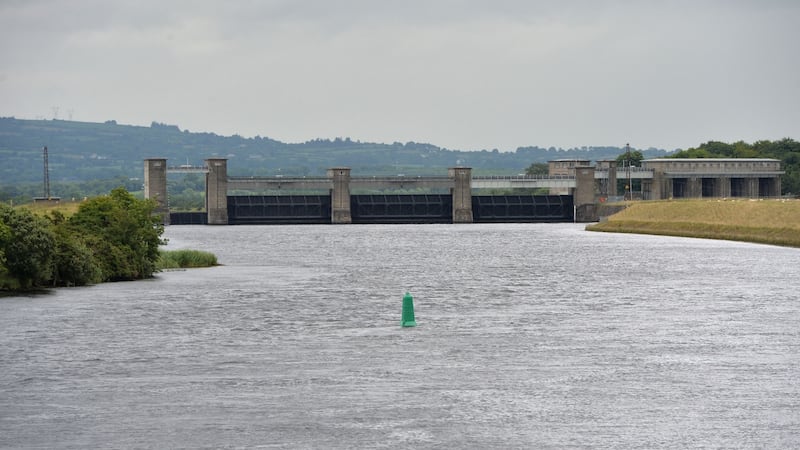Visual light installations are to be displayed at coastal locations around Ireland to indicate sea-level rise facing the country due to global warming.
They are designed to stimulate engagement between the public, researchers and Government on the immediacy of the threat from human-induced climate disruption, which will not only affect coastal communities but the whole of the country.
The Línte na Farraige project’s visual light installations indicate the projected rise in sea levels from future storm surges exacerbated by global temperature rise — based on predictions by leading climate scientists.
Much of this is already inevitable because of the scale of warming that has already taken place caused by rising carbon emissions.
RM Block
The first installation was put up on Thursday at the Spanish Arch in Galway, an area vulnerable to coastal flooding, and will be followed by other coastal locations in coming months.
The installations will mark potential future surge lines based on emissions scenarios from the Intergovernmental Panel on Climate Change (IPCC) Assessment Report 6 (AR6), and from Irish tide gauge data.
Línte na Farraige — meaning line of the sea in Irish — is a collaborative project inspired by the stunning light installations of Finnish artists Timo Aho and Pekka Niittyvirta. The collaboration involves scientists from Trinity College Dublin and Maynooth University, the Climate Action Regional Offices (CAROs) and local authorities, with design input from Algorithm and Native Events.
Solar panels and battery packs powered by renewable energy will be used as part of the installation to power the lights, which will only turn on twice a day during a rising tide.
Although striking in its simplicity, this stark piece of art inspired by science “reaches far beyond rising sea levels and storm surges, touching upon biodiversity loss, coastal erosion and solastalgia; the wide-scale devastation caused by environmental change”, according to Línte na Farraige.
“We have chosen to place these striking installations in locations of local significance to promote cohesion and action among communities,” explained one of the scientists involved, Zoë Roseby, a research fellow in Trinity’s School of Natural Sciences.
“The goal of the project is to provoke a dialogue around rising sea levels and to demonstrate that the future is still in our hands, as the rate and amount of future sea level rise depends — largely — on our greenhouse gas emissions,” she added.
“Línte na Farraige aims to encourage individuals to consider how collective societal action can mitigate climate change and sea level rise, to ultimately inspire a more sustainable and resilient future.”
Extreme coastal flooding is classed as one of the most threatening and hazardous elements which impacts on human life and infrastructure. The threat of coastal flooding is growing due to changes in extreme weather events and sea levels related to global overheating.
The AR6 report, released in August 2021, predicted a global sea level rise of between 0.28 and 1.01 metres depending on the emissions scenario (low to very high, respectively) by the end of the century.
Since sea levels were first measured in Galway in 1842, they have risen by 25-30cm. In recent years, Galway has become the go-to area along the western seaboard for reporting on coastal flooding associated with storms. Storm surges occur when strong winds drive water in the direction of the coast. The impacts of these events are then exacerbated by high spring tides.
In January 2018, Galway city was flooded following Storm Eleanor. This coincided with a high spring tide, and the water levels rose 90cm above the base of the Spanish Arch. The line of light indicated by the Línte na Farraige installation at the Spanish Arch is 1.9m.
Línte na Farraige is supported by the Creative Climate Action fund, an initiative from the Creative Ireland Programme in collaboration with the Department of the Environment, Climate and Communications.



















